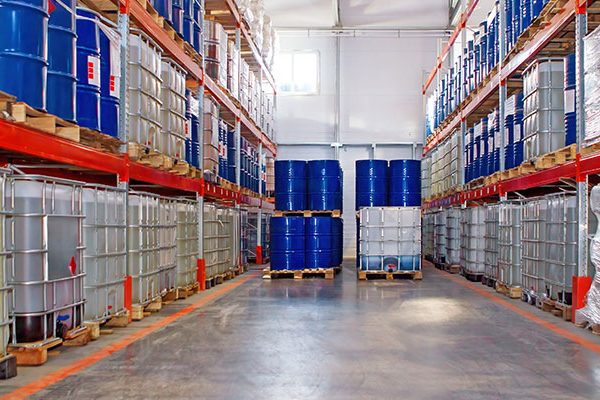There are transformative changes taking place in the Supply Chain Management (SCM) sector, driven by the latest technologies in chemical hazards management, in instrumentation, sensing, and in logistics. The suite of emerging Industry 4.0 technologies driving digitalization, has created the potential for leapfrogging over conventional techniques. For leading contract logistics players like Allcargo Supply Chain, this is an opportunity to simplify complexities and help businesses leverage the benefits of this transformation.

Chemical logistics pertains to the supply chain operations of chemical products from the procurement of raw material to the end distribution to customers. Organizations like Allcargo Supply Chain that offer specialized services for the chemicals sector, may provide procurement, material flow, transportation and distribution both nationally and internationally, as well as warehouse management, end-to-end supply chain operations, customs and security, etc.
Chemical storage and transportation need to be carefully planned and controlled at every stage.
The right modal mix
Companies need to consider the type of containers used for transporting chemicals and ensure the right modal mix – whether it should be transported by truck, train, or sea. It is also important to keep in mind, other partners and entities in the logistics ecosystem who will have access to the material during shipping, as well as how the real-time information about the shipment can be accessed.
This will help minimize the risk, and considering that logistics management for the chemicals industry demands continuous improvement in operational safety and security, supply chain risk management can emerge as a key differentiator.
Warehouse design and flexibility
Chemical warehouses also need to be specially designed for safety, example, for flammable chemicals, there should be a designated room that contains a sprinkler system and wide aisles. Chemical warehouses also need to be designed to ensure that waste streams are contained in case of an accident. Compliance involves not only complying with governmental rules, but also following voluntary ‘good practice’ guidelines like ‘Responsible Care’.
A detailed and documented process for responsibly managing the logistics associated with chemicals, is a precursor to getting the requisite certifications that help build trust and reliability.
Being a high-risk business, chemical logistics also requires flexibility and adaptability. The chemical supply chain is long, volatile, and highly complex and thus there are numerous inputs, and many touchpoints. While chemical companies are adept at designing their products and manufacturing them safely, they prefer to rely on experts like Allcargo Supply Chain to provide safe, seamless logistics solutions, navigate transport, and store these potentially dangerous products, safely adhering to all norms and safety regulations.
Integrating planning and technology
Logistics models have evolved over time to address the changing needs of the market, and vary based on the scope of service offerings and the degree of collaboration across the supply chain.
Even though the pace of automation in the chemical industry may have been slower compared to some others, rapid advances in supply chain technology enable increased functionality across multiple sites and countries.
The chemical logistics industry needs to start using integrated planning systems to improve logistics asset productivity and network reliability. Efficient, competitive and sustainable logistics are therefore of great importance for its future development.
Safe transportation and storage
Safe transportation of hazardous chemicals is one of the biggest challenges. A boom in the chemical industry has also led to a need for increased focus on safety, owing to the sharp increase in freight traffic.
It is important to ensure that trained, expert staff handles the packaging and transportation of hazardous chemicals, in line with new and emerging trends and technology.
Warehouse design should aim at the desired utility of space, orderly layout, safe product storage according to protocols and SOPs, safe warehouse operations, emergency handling, and security of warehouse. The layout should take care of product storage, loading/ unloading, parking, utility, safety equipment, welfare facilities.
Conclusion
It is vital to move ahead in the direction of integrated global supply chains, especially in times when they are getting all the more complex. Smart business solutions and digitalization need to be adopted, in addition to focusing on customers’ business needs and process orientation in line with them.
Digitalization in production industry 4.0 must go together with logistics 4.0. Regarding data, shippers must think outside the box — that is ‘think beyond the factory gate’ to realize the true potential. After all, business supply chains are most efficient when customers and their logistics services providers analyze processes together, take the right strategic decisions, and align expertise in the best way possible.











